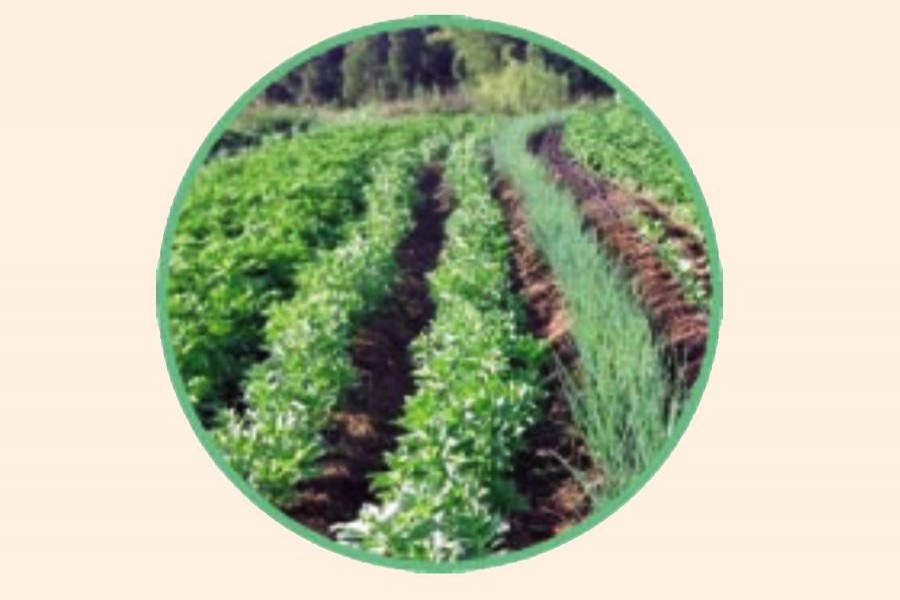The focus crop insurance received for the first time around a year ago encouraged many, especially the country's agronomists, about the prospect of better days for farmers. Since then, unfortunately, there is no visible sign of any forward movement. Like many of the hyperbolic announcements that get muted before being totally forgotten, the crop insurance project that received wide media coverage at that time appears to have followed a similar course. If this is the case, we are surely not up for changing the fate of the farming community. Let's hope it's not so.
Crop insurance, best understood in its unmistakable link with the uncertainty of cultivation and unpredictable harvest, is considered in many parts of the world a dynamic attempt to facilitate farmers in myriad ways. However, because of the vulnerabilities that often characterise farm cultivation, insuring crops against misfortunes from natural calamities is not easy to get going. Still, efforts in both the advanced and developing regions do speak of the determined and planned approach resulting in insurance schemes to cover crop adversities.
Against this backdrop, it is indeed heartening that the country's insurance firms-both public and private-had announced to work on running pilot projects on what is called weather index-based crop insurance (WIBCI). The WIBCI is an adaptation tool to reduce the risk of climate variability and extreme weather vulnerability in the agriculture sector. Clear enough, such a move has the potential of causing a huge watershed not experienced by the country's agro sector.
The situation of risks associated with crop cultivation is common to many countries in Asia and Africa, and hence exposure to uninsured risks is a major cause of low yields, slow growth and persistent poverty. Weather-related risks are hugely important for poor people in most developing countries as an estimated two-thirds of them depend on agriculture and natural resources for their wellbeing, says a World Bank report. This includes not only farmers whose income and consumption directly depend on agriculture, but also residents of rural areas whose employment and business incomes are directly or indirectly reliant on successful agricultural outcomes. Uninsured weather shocks also affect farm workers, input suppliers, entrepreneurs and workers in agribusiness, and providers of non-tradable goods and services in the rural non-farm economy.
According to experts, weather index-based insurance is a major institutional innovation that could revolutionise access to formal insurance for millions of small farmers and related people. It has been introduced in pilot or experimental form in many countries. Significant efforts have been made in research to assess its impacts on shock-coping and risk management, and to contribute to improvements in design and implementation.
As mentioned above, the weather index based crop insurance is supposed to be examined through pilot projects in the country. One of the projects is reportedly to be run by state-owned insurer Shadharan Bima in collaboration with the Bangladesh Meteorological Department (BMD), and another by the private insurer Green Delta. As per terms of WIBCI, a farmer is entitled to claim compensation from his/her insurer when certain climatic trigger points are hit, like when cyclone or tropical storm in a given area hits a specified magnitude or when rainfall rises above or drops a certain level. No doubt, this kind of cover would give farmers the ability to continue to plan and save for the longer term even if their harvests are suddenly damaged by bad weather. Understandably, this being the starter, the initiative is likely to be geared up with support from all stakeholders in the near future.
WIBCI products have been tested and applied across Asia and Africa with varying degrees of success, as a mechanism to improve livelihood security by enabling vulnerable populations to transfer risks associated with climate change, extreme weather events and other hazards. In drought-prone Africa and parts of northern India, index-based agro-insurance coverage is being practised for some time now. But the practice is totally new for our farmers.
It is not known how far the pilot projects have progressed. But one thing is certain that many of future policies and actions depend on the feedbacks of the projects. It is important that these are closely scrutinised in order to take into account every detail, including, of course, the problem areas, towards rendering crop insurance the viability for acceptance to the stakeholders. What in this regard is important is gathering experience and information from countries with similar crops and comparable weather conditions. India, for example, could be a source of useful information. In India, a crop insurance scheme called National Agriculture Insurance Scheme (NAIS) is being implemented by Agriculture Insurance Company of India, a state owned company. The scheme is compulsory for all farmers who take agricultural loans from any financial institution. It is voluntary for other farmers.
Success of crop insurance in the country will largely depend on government support that also includes raising awareness among farmers. To start with, it is the state-owned insurer Shadharan Bima that has to initiate programmes to make crop insurance attractive to farmers. However, in course of time there will be the need for specialised insuring firms to deal with crop insurance.


